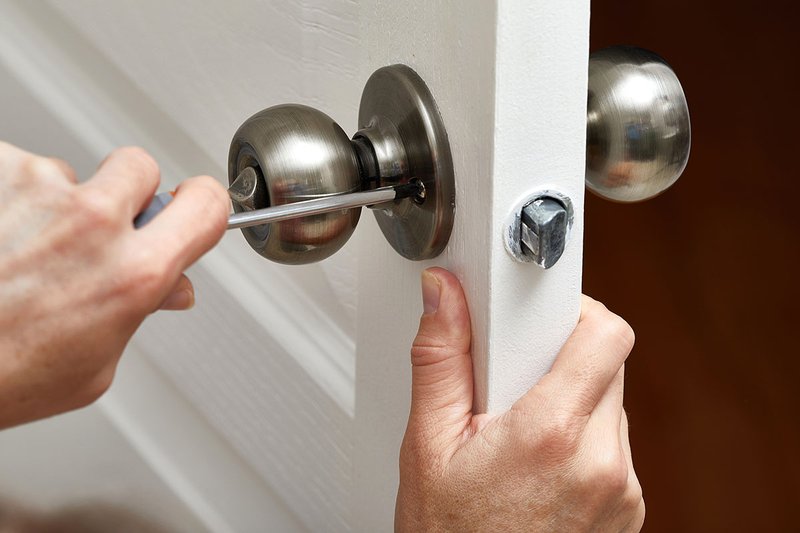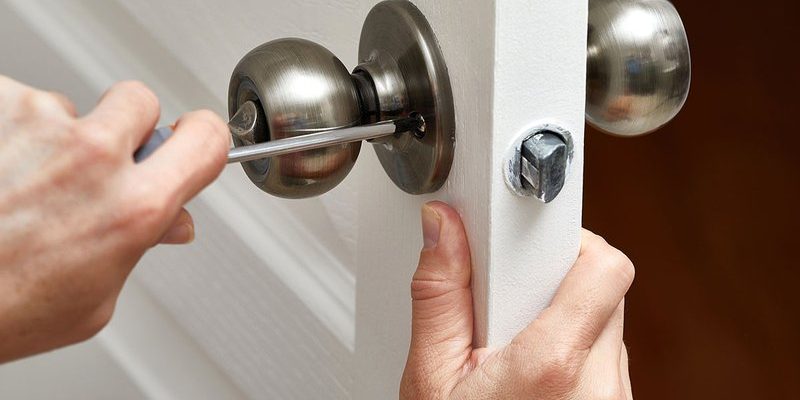
That freshly-installed Schlage, Kwikset, or Baldwin handle might’ve looked perfect on day one, but after a few seasons of rain, wind, and pollution, even the best brands can lose their shine. Honestly, it doesn’t matter if your door hardware costs $30 or $300—the outside world is rough on metal. The good news? With a little know-how and some smart habits, you can clean and protect your exterior door hardware, keeping it looking sharp much longer (and saving yourself unnecessary replacements).
What Is Acid Rain and Why Does It Damage Door Hardware?
It might sound dramatic—acid rain attacking your doorknob—but it’s a real problem for homeowners in cities, suburbs, and even rural areas. Here’s the thing: acid rain is just regular rain mixed with pollution from power plants, cars, and factories. Those pollutants (mainly sulfur dioxide and nitrogen oxides) combine with water vapor and create weak acids that fall wherever rain, mist, or even snow goes.
On metal door hardware, these acids slowly eat through protective coatings—clear lacquer, chrome plating, or even stainless steel. Over time, you’ll start to see:
- Corrosion spots on metals like iron, steel, and brass
- White or green staining (especially on brass or bronze)
- Cloudy patches on shiny finishes
- Sticky or rough textures that make you want to avoid touching your handle altogether
The bad part is, once acid rain starts wearing away the protective layer on a Kwikset or Schlage handle, the damage can move fast. That’s why catching it early—by cleaning and protecting—is your best move.
How to Tell If Your Door Hardware Needs Cleaning or Protection
You might be wondering if your door hardware is actually suffering from acid rain or if it’s just garden dirt, pollen, or a bit of neglect. There are a few telltale signs that what you’re seeing is likely acid rain damage:
- Discoloration that doesn’t wash off with water alone (think green, white, or blue-gray patches)
- Fading or yellowing of once-clear finishes
- Rough, pitted, or bubbly areas when you run your finger over the metal
- Increased friction when turning a knob or thumb latch—sometimes acid rain literally eats away at the moving parts
If you’re not sure, try a gentle wipe-down with a clean, damp cloth. If the spots remain or get worse after drying, you’ve probably got acid rain damage starting to set in. Schlage and Baldwin hardware often have durable finishes, but even the toughest brand can’t hold up forever without a little attention.
Simple Step-By-Step Cleaning for Acid Rain-Damaged Hardware
Ready to give your hardware a fresh start? Here’s how to safely remove acid rain stains and prevent more damage. Honestly, you don’t need fancy tools or expensive cleaners—just a little patience and the right approach.
- Step 1: Remove loose dirt and debris with a soft cloth or feather duster. Don’t skip this—scrubbing grit into metal can make tiny scratches that trap more acid and dirt.
- Step 2: Make a mild cleaning solution. Mix one tablespoon of gentle dish soap (like Dawn) with two cups of warm water in a bowl.
- Step 3: Dip a clean microfiber cloth in your solution, wring it out, and gently wipe the hardware. Don’t soak the area—too much water can seep into locks and cause other problems.
- Step 4: For stubborn stains, make a soft paste with baking soda and water. Apply it gently using a non-scratch sponge or an old toothbrush. Work in small circles, focusing on problem spots.
- Step 5: Rinse with a fresh damp cloth. Always remove any soap or cleaner residue—that’s where streaks and new spots love to form.
- Step 6: Dry everything completely with a clean towel. Don’t let water air-dry on the hardware; that’s just asking for mineral spots and streaks.
Never use steel wool, abrasive powders, or harsh chemicals (like bleach or ammonia) on exterior door hardware—they can strip protective coatings and make the acid problem even worse.
How to Protect Exterior Door Hardware From Future Acid Rain Damage
Cleaning is just the first step—if you want your door hardware to stay beautiful, protection is key. Think of it like waxing your car after a wash; the clean surface is vulnerable, so you want to shield it from whatever nature throws next.
Here are some practical ways to keep acid rain at bay:
- Apply a silicone-based spray or clear wax after cleaning. These products create a thin, invisible layer that helps block acids, moisture, and grime. Brands like 3M or carnauba wax (yep, the car kind) work surprisingly well on metal hardware.
- Try a specialty lacquer or clear coat, especially if you live in a high-pollution area or near the ocean. Just be sure your hardware is totally dry (and clean) before spraying.
- Install a door awning or canopy if you don’t have one. Even a small overhang can stop rain from pummeling your hardware directly during every storm.
- Check and tighten mounting screws so water doesn’t sneak behind plates or into lock cylinders, where it can cause hidden rust.
Most major brands, like Baldwin, Schlage, and Kwikset, have care guides online—some even recommend specific products designed for their finishes. Following their protection tips can also keep your warranty valid.
How Different Finishes React to Acid Rain
Not all metals and finishes react to acid rain the same way. That’s why one neighbor’s brushed nickel handle might still look great, while your shiny brass starts turning green.
- Polished brass and unstable alloys are the most vulnerable. They’ll tarnish, pit, and turn greenish-blue if left unprotected.
- Stainless steel and chrome-plated hardware handle acid rain a lot better—but they’re not immune. Over time, even small scratches can let acid reach the metal underneath, causing rust or dull spots.
- Powder-coated finishes (often found on modern matte-black or colored hardware) resist most acid rain, but if the coating is chipped or scratched, the exposed metal underneath can corrode quickly.
- Antique, patina, or oil-rubbed bronze finishes are designed to change over time. Expect some color shift, but you still want to avoid pitting or streaks from unchecked acid rain.
If you’re picking new hardware and live in an acid rain-prone area, choosing stainless steel or powder-coated options can save you a ton of maintenance.
Common Mistakes to Avoid When Caring for Door Hardware
Let me explain—the quickest way to ruin your expensive Schlage or Kwikset hardware isn’t acid rain itself, but trying to fix it the wrong way. Here are some things to skip if you want to avoid making things worse:
- Never use abrasive pads or harsh cleaners. Even if the tag says “for metal,” many scrubbing pads scratch up the coating. That just gives acid rain new ways to get underneath.
- Don’t ignore early signs of damage. The longer acidic water sits, the deeper it eats into the finish. Small spots turn into big patches fast, especially in humid weather.
- Avoid waxes with colorants or harsh chemicals. Only use waxes that specifically say “clear” and “non-abrasive”—otherwise, you might stain or cloud the hardware.
- Never soak electric or smart locks. For models like the Schlage Encode or Kwikset Halo, getting water inside the battery compartment or sync connections can cause “remote” malfunctions or need a full reset. Always clean these areas with a barely damp cloth and dry immediately.
Honestly, it’s tempting to use whatever’s under the sink, but when it comes to acid rain and sensitive door hardware, gentle really is better.
How to Maintain Locks and Handles With Electronic or Remote Features
If you have a smart lock or electronic keypad from Kwikset, Schlage, Yale, or another brand, you’ll want to be even more careful while cleaning and protecting against acid rain.
Electronic or battery-powered locks add layers of complexity:
- They have battery compartments that can be damaged by moisture.
- Syncing and pairing issues can pop up if water gets into sensitive connections.
- Some models use remotes or smartphone apps, which may need troubleshooting if exposure to rain causes malfunctions.
Here’s the safe way to clean and protect electronic or remote-enabled door hardware:
- Remove batteries before cleaning. This prevents accidental shorts or corrosion at the contacts.
- Use a slightly damp microfiber cloth—never spray cleaner directly onto the hardware. For tough spots, use a cotton swab with mild dish soap.
- Wipe dry immediately. Don’t let any moisture hang around, especially near the code pad, battery door, or sync/reset buttons.
- Protect by applying wax or silicone spray to metal parts only—keep it away from keypads, screens, or sensor areas.
- Double-check after reassembly that your lock still pairs or syncs. If not, follow your brand’s troubleshooting steps to reset connections.
Taking a few extra minutes with smart hardware isn’t just about looks—it keeps your high-tech security working like it should.
Comparing DIY vs. Professional Help: When to Call in an Expert
Most cleaning and protection jobs are totally doable for the average homeowner, but there are times when it’s smarter—and safer—to bring in a pro.
DIY works best when:
- Stains are mild or limited to the outer surface
- Locks and handles still work smoothly (no sticking, grinding, or battery issues)
- There’s no sign of deep corrosion, especially around mounting screws or seams
Call a professional locksmith or hardware specialist if:
- You notice green or white “growths” inside the keyway or mechanism
- The lock slips, sticks, or won’t turn even after cleaning
- Smart locks need a reset, re-pairing, or code troubleshooting after water exposure
- Finish has peeled off in big sections, exposing raw metal underneath
A good pro can sometimes restore old or damaged hardware you’d assumed was lost—or at least recommend the best replacement that matches your door.
Final Thoughts on Keeping Your Exterior Door Hardware Safe from Acid Rain
Protecting your exterior door hardware from acid rain damage isn’t rocket science, but it does take a bit of routine care. Regular gentle cleaning, the right protective products, and a watchful eye for early signs of trouble go a long way—whether you’re working with classic brass, modern matte black, or a high-tech Schlage remote lock.
Treat your door hardware like you’d treat a favorite tool or a good pair of shoes: keep it clean, keep it protected, and don’t wait until there’s a serious problem to step in. That way, every time you come home, your entryway will look just as welcoming and polished as the day you picked out that perfect handle.
